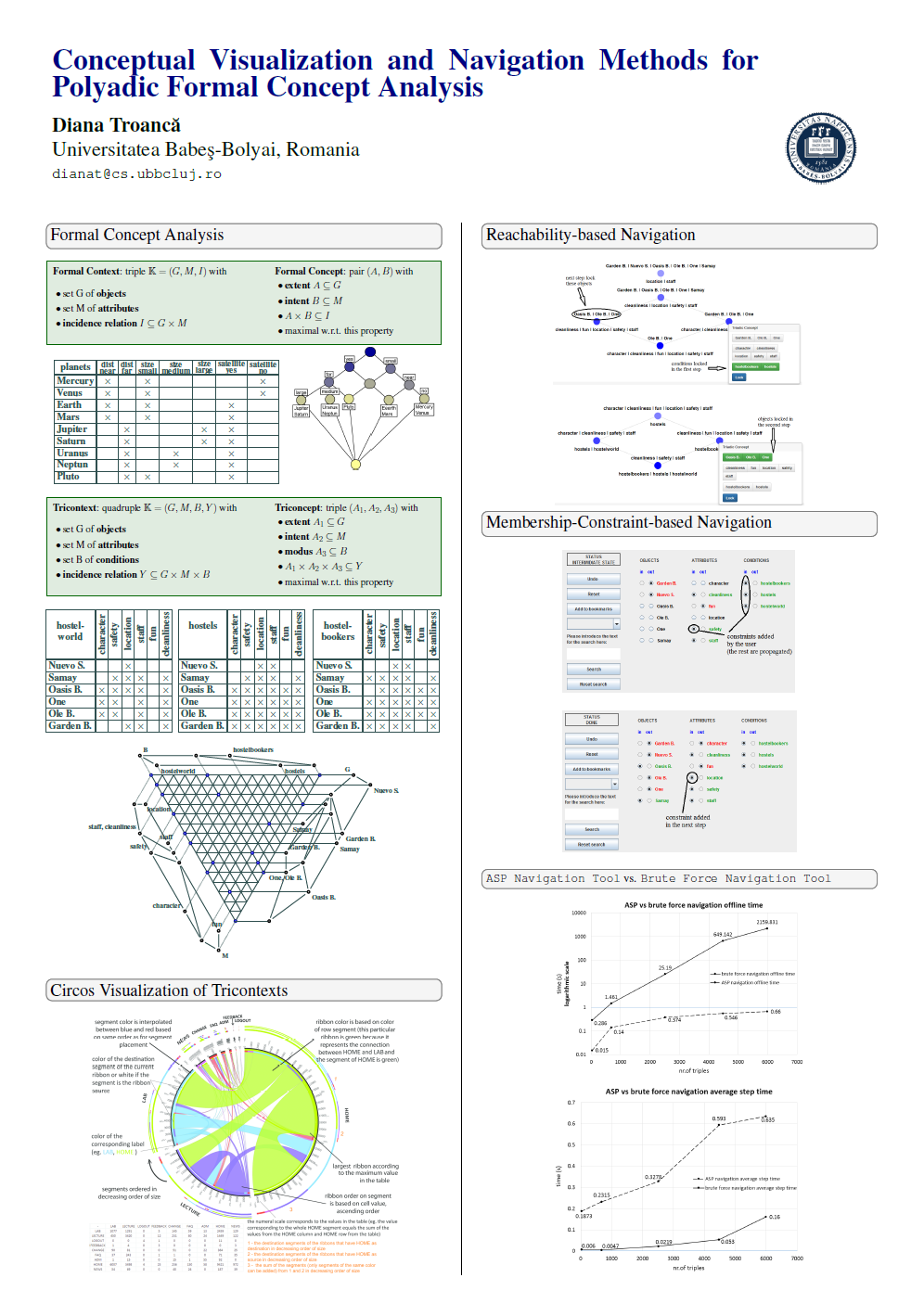Abstract: Conceptual knowledge is closely related to a deeper understanding of existing facts and relationships, but also to the argumentation and communication of why something happens in a particular way. Formal Concept Analysis (FCA) is the core of Conceptual Knowledge Processing. It emerged from applied mathematics and quickly developed into a powerful framework for knowledge representation. It is based on a set theoretical semantics and provides a rich amount of mathematical instruments for representation, acquiring, retrieval, discovery and further processing of knowledge. FCA was introduced in the dyadic setting [Ganter and Wille, 1999] and extended to a triadic [Lehmann and Wille, 1995] and eventually n-adic setting [Voutsadakis, 2002]. Intuitively, dyadic datasets can be understood as objects related to attributes and, in addition, to conditions for the triadic case. FCA defines concepts as maximal clusters of data in which all elements are mutually interrelated. A common problem for n-adic FCA is concept visualization and navigation. The goal of my thesis is to find visualization and navigation paradigms that can be applied to higher-dimensional datasets. Therefore, we study the triadic case and propose several visualization and navigational approaches. Furthermore, we evaluate these approaches, study their generalizations and extend them, where possible, to n-ary formal contexts.
Keywords: Conceptual Knowledge Processing, Formal Concept Analysis, visualization, navigation, higher-dimensional datasets
Acknowledgments: This research was supported by a scholarship from DAAD.
Presentation: Doctoral Consortium – IJCAI 2016

